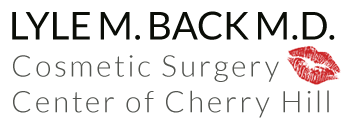Arnica – A Simple, Easy, Natural Way to Reduce Inflammation, Swelling, and Bruising!
Arnica is an herbal, “homeopathic/naturopathic” medication which can help to limit and diminish swelling or bruising. It is equally effective as either a preventative measure or for treatment. Arnica can be used as a topical cream preparation or as an oral tablet/pellet form. It is widely available, inexpensive, and has essentially no side effects or risks. In other words, there’s a lot of potential benefit to gain from using Arnica, and very little (if any) downside!
Arnica preparations are made from the Arnica Montana plant (commonly called the “mountain daisy”), a daisy-like flowering plant, growing 1- 2 feet in height with orange/egg yolk yellow colored aromatic flowers on a tall thin stem. It is a perennial, blooming in the summer months and can be found growing wild on many mountain ranges throughout Europe and North America. In Greek, arnica means lamb (so likely named for the plant’s characteristic soft, hairy leaves!). Arnica is also known as Mountain Tobacco (yes – it was actually smoked at one point!), Leopard’s Bane, Wolfsbane, Arnica Flowers, and Arnica Root.
Mountain climbers and hikers have passed down for generations the folklore that chewing on the mountain daisy’s leaves will help to diminish bruising and swelling from any climbing injuries. Like many traditional “home remedies”, there is actually a good amount of truth to this advice. Modern scientific investigations have revealed the presence of compounds found to have real effects on both limiting and accelerating the resolution of any swelling or bruising. Over 30 species of the Arnica plant have been identified. All seem to have essentially the same bio-active compounds. The leaves and stems are the source of purified medicinal preparations of Arnica, being produced for common use as early as the 1500’s.
Arnica is a recognized and registered herbal medication (Traditional Herbal Registration) with the UK’s Medicines & Healthcare Products Regulatory Agency “for the symptomatic relief of muscular aches and pains, stiffness, sprains, bruises and swelling after contusions”.
The key active compounds:
Sesquiterpene lactones –
- decrease swelling
Lychnopholides –
- inhibit the inflammatory mediator gamma interferon (gammaIF)
- stimulate the anti-inflammatory mediator interleukin -10 (IL-10)
Eremantholides –
- inhibit the inflammatory mediator tumor necrosis factor (TNF)
- stimulate the anti-inflammatory interleukin -10 (IL-10)
Analgesic and antiseptic properties have also been reported, although the scientific data supporting these claims is not quite conclusive.
Individuals who have noticed that they seem more prone to swelling or bruising than the average person can really benefit from taking Arnica before any sort of medical or dental procedure. But after any physical mishap, sports injury or for any circumstance where swelling or bruising is expected, Arnica can be just as helpful for everyone.
Many plastic surgeons will recommend Arnica use both before and after procedures like liposuction, breast implant surgery, nasal reshaping (rhinoplasty) or facelifts to help make the recovery easier via a faster resolution of any bruising or swelling. But even minor cosmetic office procedures like Botox or wrinkle filler treatments have the potential to cause annoying bruising, and arnica can help thwart this as well.
My favorite resource for reliable, high quality Arnica is VitaMedica Corporation (www.vitamedica.com). My patients routinely and successfully use their oral herbal product, Arnica Montana 30x HPUS, before and after any cosmetic procedures.
Dr. Lyle Back is originally from New York City, receiving his medical and surgical training at Rutgers Medical School, Cooper Hospital – University Medical Center, and Ohio State. He is Board Certified in General Surgery (ABS) and Plastic Surgery (ABPS). He is a Fellow of the American College of Surgeons (ACS), the American Academy of Cosmetic Surgery (AACS), and a longstanding member of the premier American Society of Plastic Surgeons (ASPS). He served as a Professor of Plastic Surgery at Temple University and St. Christopher’s Hospital for Children and performed reconstructive surgery with “Operation Smile” in Vietnam. He specializes in the full range of the most modern and state of the art facial cosmetic surgery procedures and non-surgical cosmetic enhancement techniques available today.
